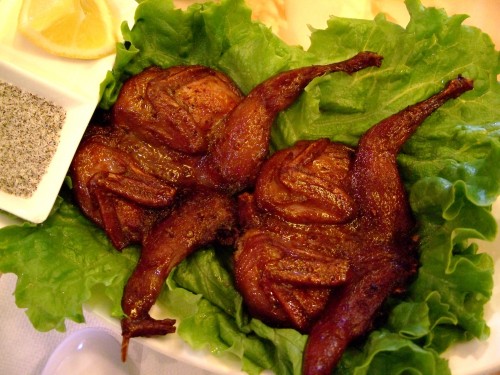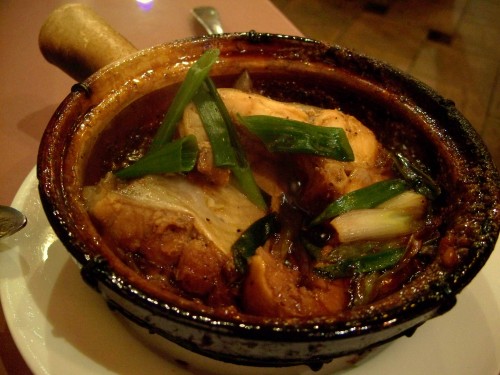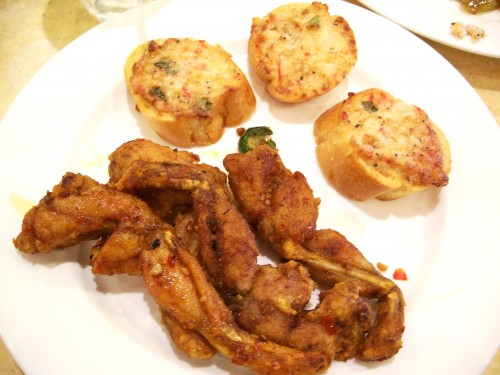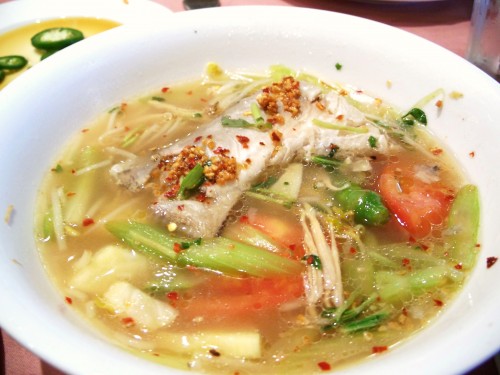
They never blink. They never wag their tails. They never mutter a sound. I can never tell what they are thinking or feeling when I look at them. I like them deep-fried, or pan-charred with salt, lemongrass, and pepper, but that’s mostly because of the seasoning mix they’re fried with. By themselves, they are cold-blooded creatures with a distinctive smell, tiny bones resembling oversized needles, very little fat, and worst of all, flaky meat. They’re quite abundant in Vietnam, both alive and cooked. I even like the dipping sauce made out of them. I just don’t like them. Something about their meat freaks me out, or perhaps it’s the childhood memory of having a bone of them stuck in my throat that damages my feeling for those footless fellas. I would have never done it, but my mom, craving for some motherland’s taste, ordered canh chua cá (fish sour-soup) when we went to Kim Son the other day. How could she… fish and soup? Well, it turned out to be the best dish on the table.
Canh is soup. Usually the vegetables in canh are leafy greens, and because canh came about before the French and potatoes arrived in Vietnam, there is no canh with potato. There are, however, canh with taro corm, cassava, sweet potato, and other kinds of starchy roots. A special kind of canh most suitable for summer weather is canh chua (sour), because the mix taste of sour, pepper-spicy and sweet is just cool. The sourness comes from tamarind (fruit and young leaves), starfruit, pineapple, tomato, or lá dang, a kind of sour leaf. Is there sour soup in Western cuisines?
Usually I am indifferent to canh chua at my best mood, because usually canh chua is inseparable from our footless flaky friend. The combination canh chua and fish is adored across the delta, in various menus, and has followed the southern Vietnamese immigrants overseas. It is so southern and so countryside that almost certainly the delta farmers would invite you a bowl of canh chua when you visit them during lunch time. There is also canh chua with shrimp and pineapple, and somewhere in her memory, my mom knows that there is canh chua with chicken, however rare. Fatty meat (pork, duck, beef, etc.) is not allowed. The broth must be clear. The fish must be from fresh water: catfish, snakeheads, climbing gouramis, “pangasius krempfi” (ca bong lau),… Canh chua can’t be cooked with seawater fish because they’re too fishy to be overpowered by the sour benefactors. Ok, what else is there for background check… a bowl of canh chua often has many kinds of vegetables beside the citric star of the act, these add-ons include bean sprout, the stems of night-scented lily (I learn so many new names blogging!), okra,… Native villagers use almost every edible plants they can find in gardens and ponds, so there is hardly any fixed recipe for canh chua. That’s the beauty of it, food is not supposed to be fixed.
(more…)
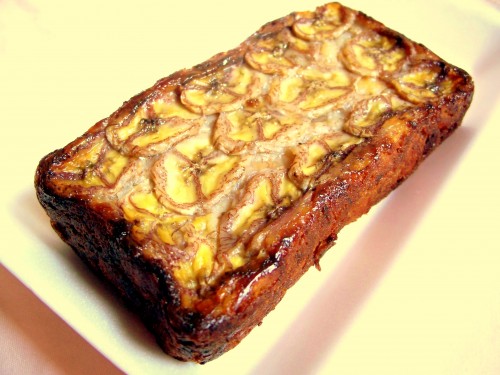
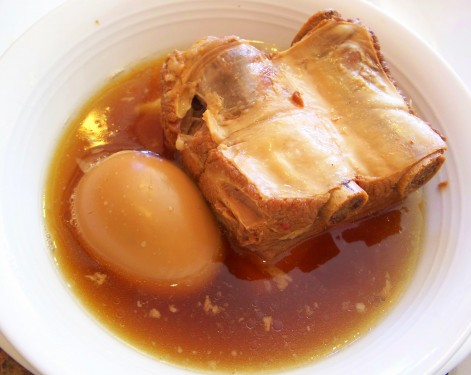

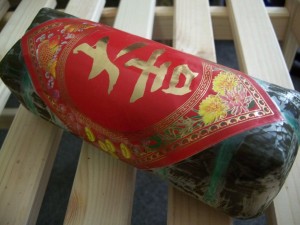 Bánh chưng and bánh tét to the Vietnamese Tết are like turkey and ham to the American Thanksgiving. The holiday feast just wouldn’t feel right without them. Although I have blogged about
Bánh chưng and bánh tét to the Vietnamese Tết are like turkey and ham to the American Thanksgiving. The holiday feast just wouldn’t feel right without them. Although I have blogged about 
